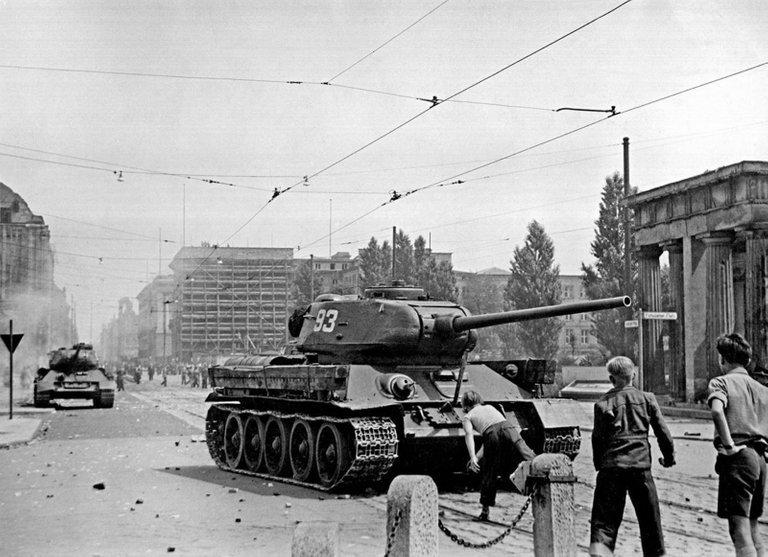A wave of strikes and protests turns into a widespread uprising against the communist German Democratic Republic government, which was violently suppressed by Soviet troops.
The East German uprising began as a series of strikes and protests at living standards; it soon turned political, with town halls being stormed amid vocal demands for German reunification. The immediate trigger for the unrest was an announcement by the Communist government that it would increase working hours for factory employees while simultaneously drastically raising the price of groceries.
The backdrop to the uprising was a policy of "expanding socialism according to plan" by East Germany's communists in the early 1950s. It involved a combination of expropriating farms to create massive industrial-scale farming collectives and stepping up construction of the heavy-industry sector. That combined with crushing World War II reparations payments plunged the East German economy into chaos. As austerity measures became the order of the day, the country fell into economic crisis as more and more people left for the relative prosperity of West Germany. By the spring of 1953, close to 30,000 people left East Germany every month.
Then came the strikes. During the last days of May and early June, dissatisfied workers began laying down their tools. But the first massive wave of protest came on June 16, as thousands of construction workers, emboldened by the death of Stalin, protested on Berlin's Stalinallee (today's Karl Marx Allee) against wage cuts, forming a long protest march through East Berlin.
The following day, more than a million people went on strike and took to the streets in more than 700 cities and communities. What began as an uprising for better wages quickly turned into a protest for freedom, democracy and unity in Germany. The workers called for greater government transparency, a better quality of life, the resignation of the GDR's government, free elections by secret ballot and reunification.
The tense situation escalated further in East Berlin, the epicenter of the unrest. The GDR regime turned to the Soviet Union for help. Soviet tanks rolled into the unarmed crowd of protesters. The troops began firing at the workers on Friedrichstrasse and at Potsdamer Platz, killing dozens of people.
During the days following June 17, as many as 10,000 protesters and members of the strike committee were arrested. More than 1,500 protesters were given lengthy prison sentences.
For more details and images from events in this year, check out History0x
